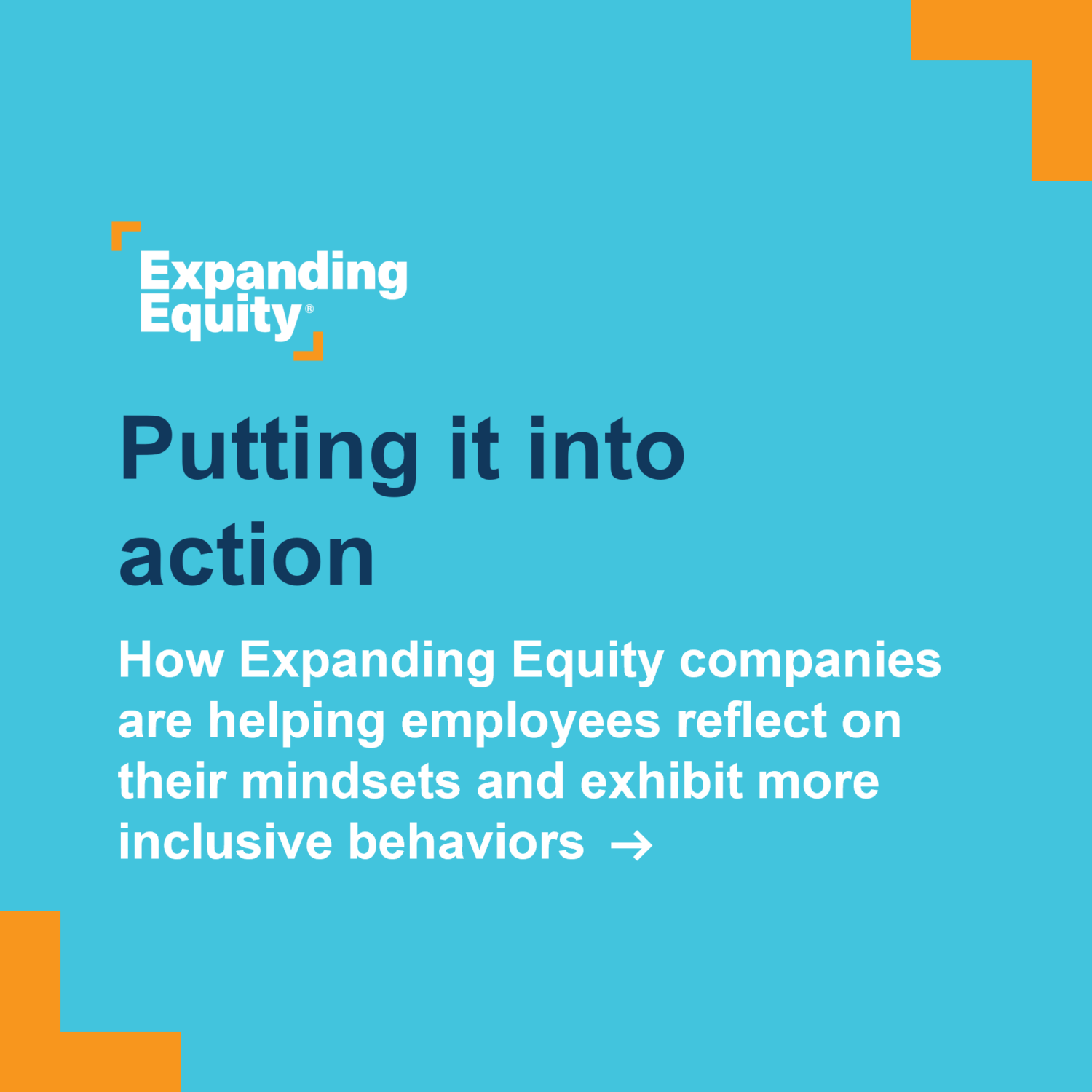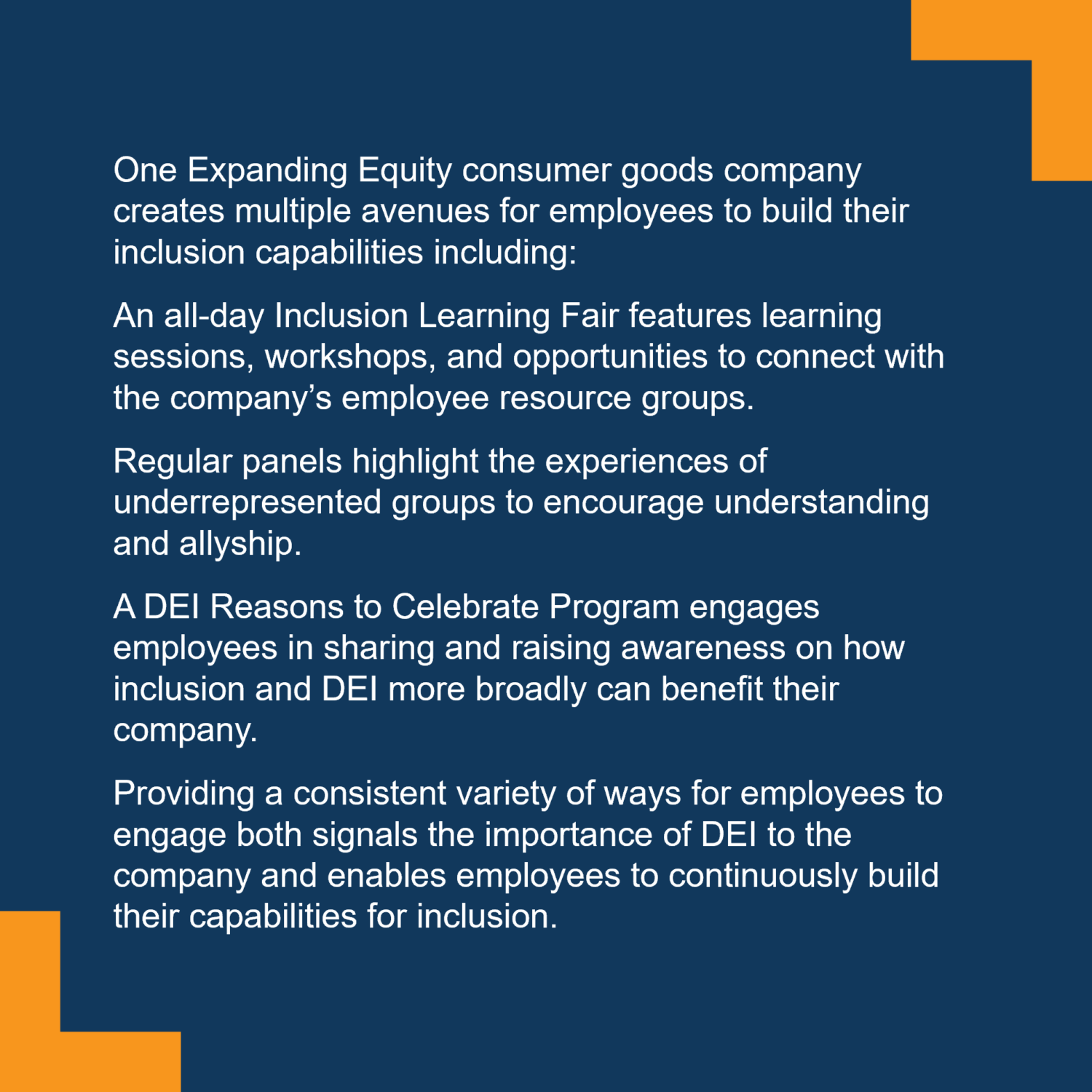Inspired by participating companies in the Expanding Equity network, this post is the first of four in a series lifting up actions leaders and organizations can take to accelerate inclusion and belonging in the workplace. (See WKKF’s Inclusion & Belonging Guidebook for more how-to information.)
Exhibit 1: Four action areas for improving workplace inclusion and belonging
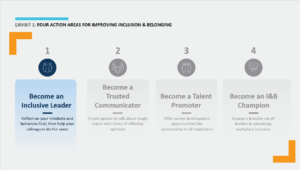
Creating an inclusive workplace must start with individual leaders doing their own work, reflecting honestly on how they’re showing up with their teams and at their organizations and identifying how they can improve. All leaders must embark on their own journey of improving their attitudes and behaviors before they can ask others to do the same. We have seen many organizations launch major inclusion initiatives with great fanfare, only for the employees to respond, “I’ll believe it when I see it.”
Teams are looking for their leaders to role-model inclusivity and that typically starts with intentionality and curiosity from the leader about where they may be falling short and where they can do better. This self-reflection around how inclusive am I being and self-action around actually becoming more inclusive is not easy for some leaders; it can feel unsettling, uncomfortable and uncertain.
Organizations can help by offering capability-building programs designed to guide leaders through a self-discovery process and educating and training them on behaviors they can adopt and actions they can take with their teams. Specific inclusive leadership behaviors include: being highly collaborative, being authentic and vulnerable, listening well, seeking feedback, having intercultural competence and managing interpersonal conflict.
Inclusive leadership programs in companies usually start with a small group of people leaders (e.g., middle managers and frontline supervisors) across different levels and functions, working with them to tailor training content to relevant moments in their day-to-day job (e.g., team huddles, 1:1 check-ins, giving feedback and performance evaluations). Also, these programs typically provide job aids and nudges to help managers and supervisors easily integrate inclusive behaviors into their work. They also facilitate best practice sharing among people leaders through lunch-and-learns and online forums.
Inclusive leadership also means that leaders commit to ensuring all team members are treated equitably, feel a sense of belonging and have the resources and support they need to achieve their full potential. Toward that end, leaders can support their colleagues on their own inclusion journeys, collectively addressing limiting mindsets, attitudes and behaviors that may be detracting from an inclusive team environment (Exhibit 2).
Exhibit 2: Uncovering and changing underlying mindsets
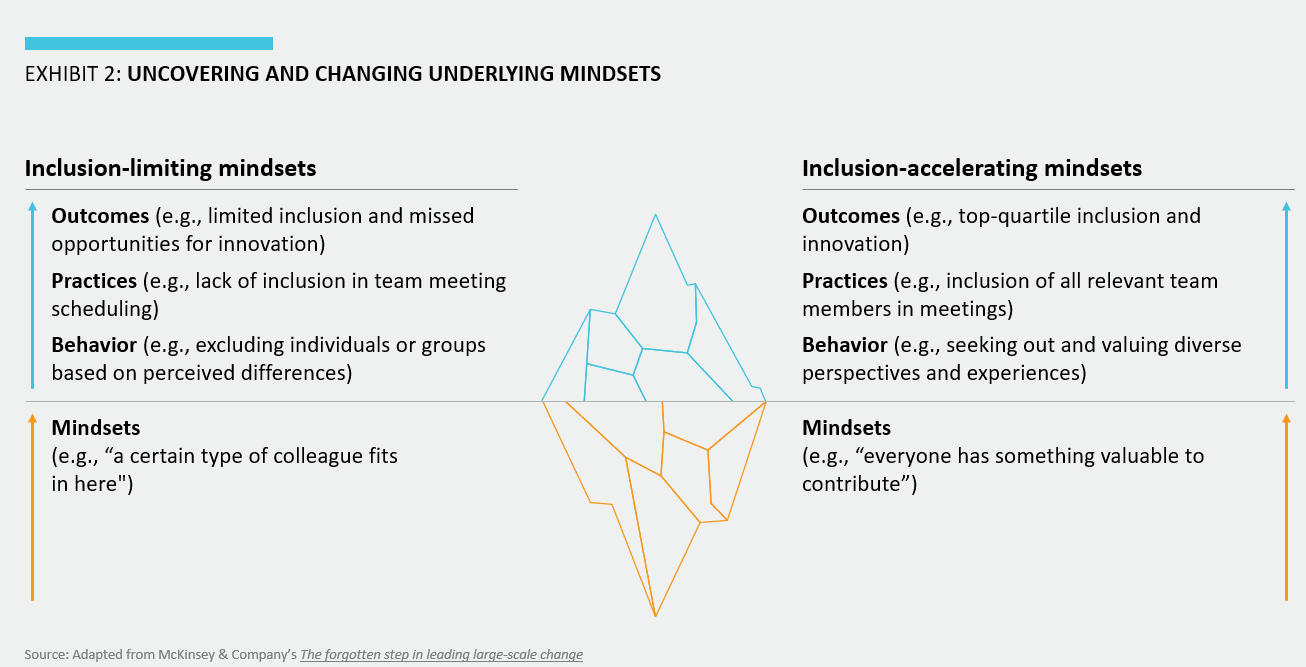
In fact, research has found that companies that identify and address limiting mindsets at the beginning of change efforts are four times more likely to succeed. Changed mindsets lead to inclusive behaviors, which flow into collaborative practices and result in improved outcomes for the business in the form of increased innovation and production, as well as greater influence and impact.
If you want to change any of the outcomes in your life, you need to start with your mindset. What do I really think about that person or that group of people? What do I appreciate and respect about them? What more can I learn from them? This type of inquiry will open your mind and generate different feelings about your colleagues and ultimately how you act around them and what you create and build together.
What the Evidence Says
Companies have more work to do to support leaders (especially middle managers and frontline supervisors), and in turn employees, in adopting more inclusive behaviors and moving from awareness to action.
When organizations formally recognize and reward inclusive behaviors, managers and employees alike know it matters and seek out opportunities to learn and adopt more of those types of behaviors. There is a real need to help managers and employees see what “great” looks like when it comes to inclusion and help them get there in the day-to-day interactions with their colleagues.
For example, fewer than one-third of employees believe their coworkers regularly take the time to learn about each other’s diverse backgrounds. Black employees have the lowest perceptions, with 45% saying that their coworkers seldom or almost never take time to learn about them, registering at nearly half that of their White counterparts (Exhibit 3).
Instead, more than 80% of surveyed employees indicated their company frequently “educates employees on how to identify and address inappropriate, disrespectful or biased behavior at work”. This reinforces the criticism that DEI trainings often fail to change behavior and instead focus on highlighting what “bad” looks like, rather than sharing helpful examples of what “good” looks like.
Exhibit 3: Employees of color, especially Black employees, are less likely to perceive their coworkers as taking the time to learn more about each other
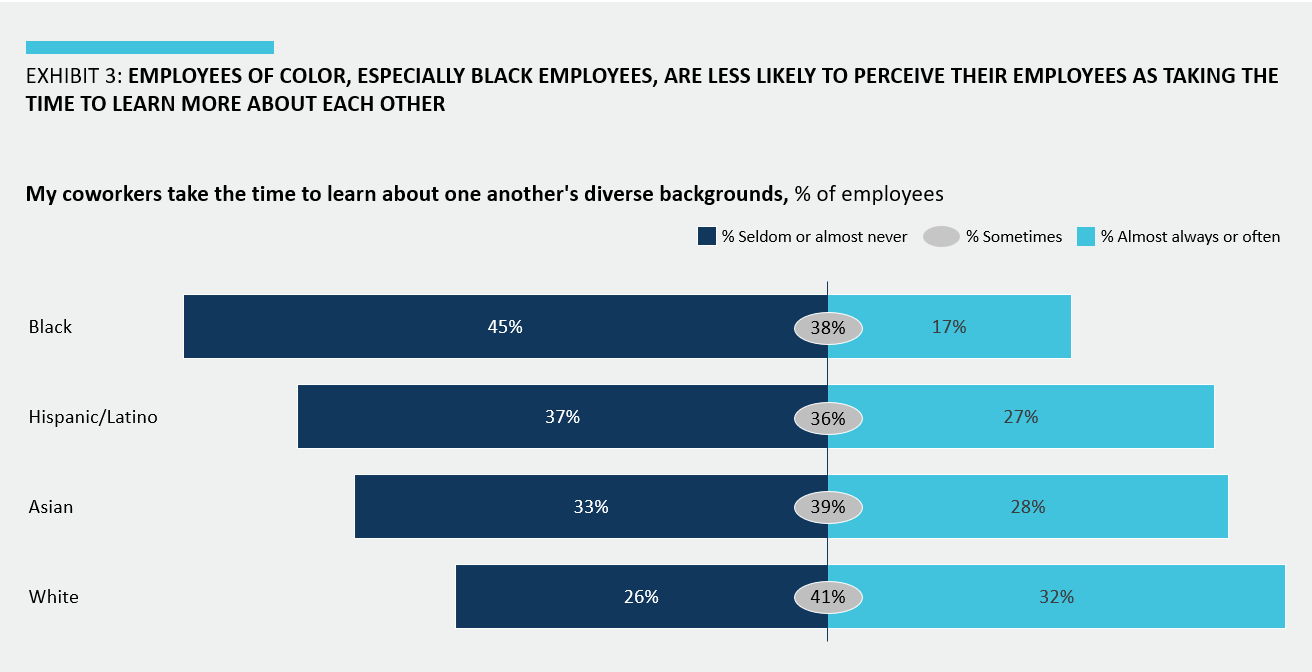
Ultimately, identifying, practicing and reinforcing inclusive workplace behavior, especially for leaders, will directly translate into improved interactions in everyday moments at work. First, leaders can gather data and information on how they’re really showing up in the workplace – perhaps by meeting with colleagues individually over a coffee and asking for their honest feedback.
Some possible questions include:
- Is the leader creating enough space for their team members to share their opinions?
- Are they genuinely open to alternative points of view?
- Do colleagues feel like the leader is taking a real interest in them as a person, not just as a worker?
Leaders can use that feedback from their colleagues and the insights from their own self-reflection to identify the specific mindset changes and behavioral shifts they want to see in themselves. Employees want to see leaders doing it, or at least trying it, not just saying it.
Some possible actions include: checking in on people periodically and genuinely asking how they’re doing as a person; asking what interests them and inspires them; and utilizing one-on-one meetings to catch up and inquire about long-term goals, not just near-term milestones.
Once you as a leader get better at showing up with your team and at your organization, your colleagues will start emulating it, and you’ll also be able to help your colleagues show up better too by sharing what you’ve learned and how you’ve grown in your role.
Putting it Into Action:
This Expanding Equity company is helping employees reflect on their current mindsets and exhibit more inclusive behaviors.
